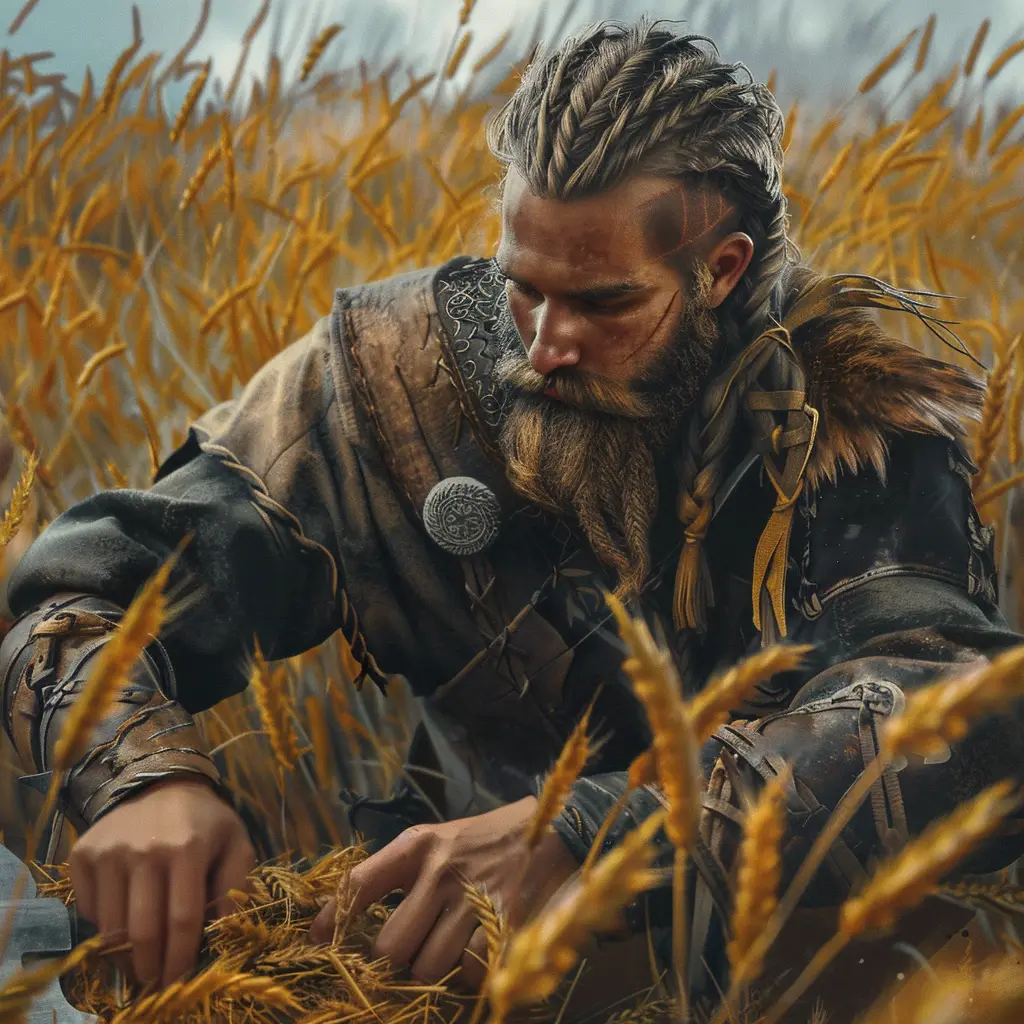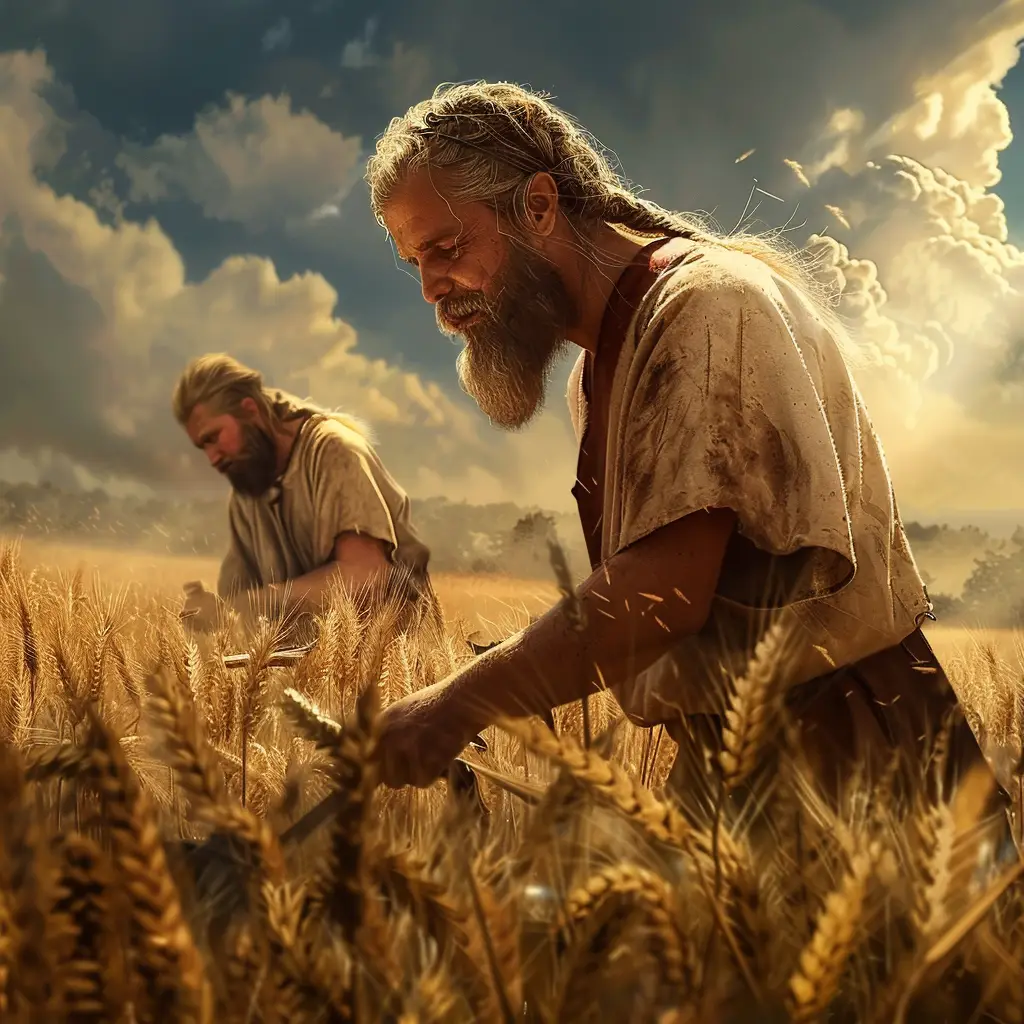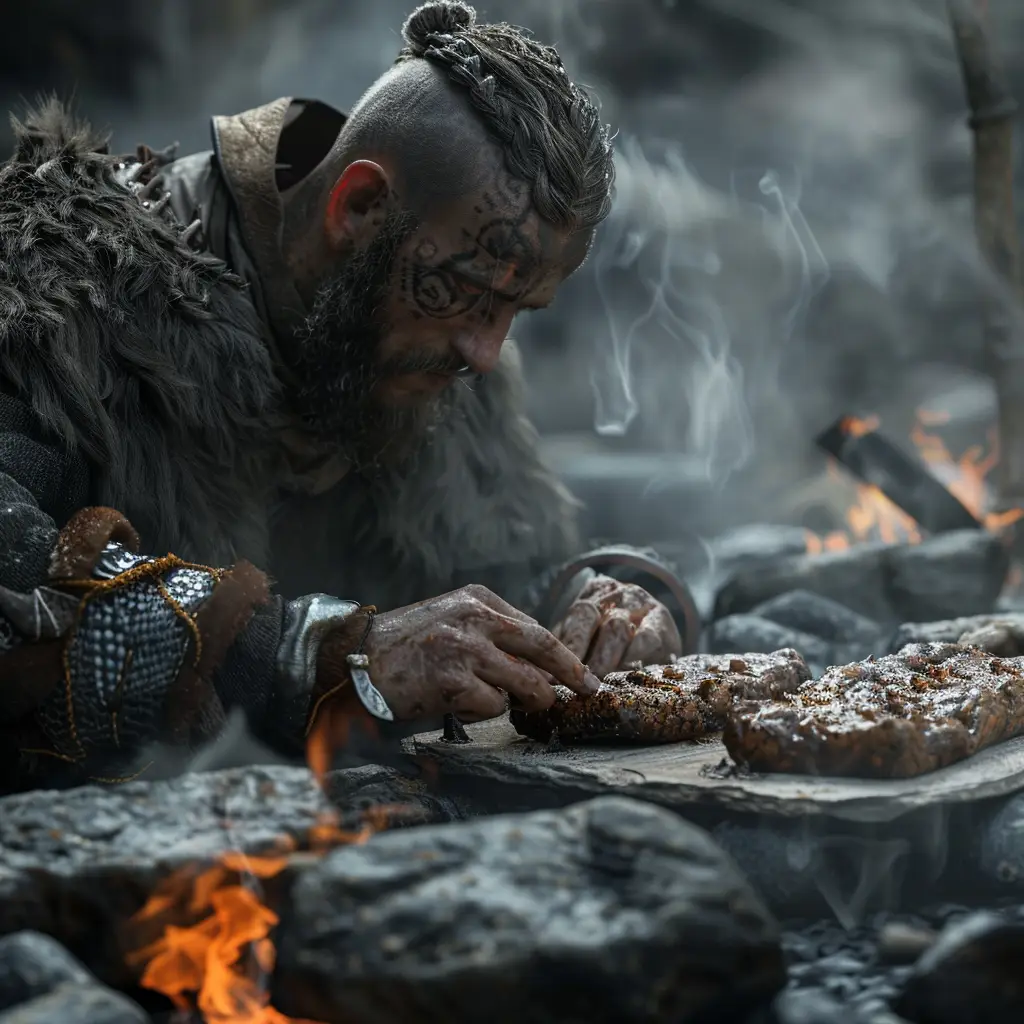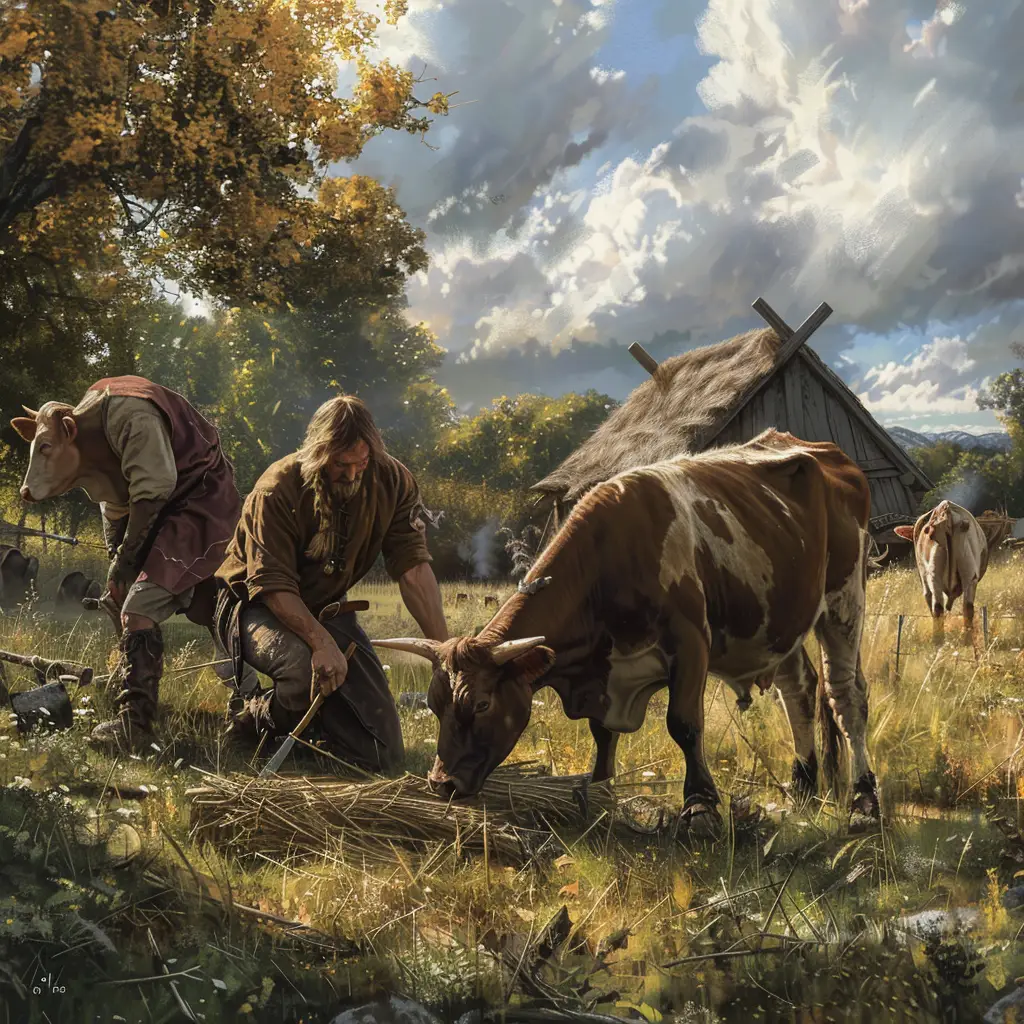Staple Foods
Grains and Bread:
Barley, rye, and oats were the primary grains grown by Vikings. These grains were used to make bread, porridge, and ale.
Bread was often baked on flat stones or in clay ovens and was typically coarse and dense.
Meat and Fish:
Meat from domesticated animals like cattle, pigs, sheep, and goats was common. Hunting provided additional sources of meat, such as venison and wild boar.
Fish was a large part of the Viking diet, especially in coastal areas. They consumed a variety of fish, including herring, cod, and salmon.
Preservation methods like smoking, drying, and salting were essential for ensuring a stable food supply through harsh winters.
Dairy Products:
Vikings kept cows, goats, and sheep for milk, which they used to produce butter, cheese, and skyr (a type of yogurt).
Vegetables and Legumes:
Root vegetables like carrots, parsnips, and turnips were common.
They also grew cabbages, onions, leeks, and garlic.
Legumes such as peas and beans were important sources of protein.
Fruits and Berries:
Apples, plums, and cherries were among the fruits they cultivated or gathered.
Wild berries, such as blackberries, raspberries, and blueberries, were also foraged.
Beverages
Ale:
Ale was the most common drink, brewed from barley and flavoured with herbs like bog myrtle and juniper.
Mead:
Made from fermented honey, mead was a special occasion drink enjoyed by Vikings.
Buttermilk and Whey:
These were common byproducts of dairy production and often consumed as beverages.
Cooking Methods
Boiling:
Large pots were used to boil stews and soups, combining meat, vegetables, and grains.
Porridges made from grains or legumes were common daily meals.
Roasting and Grilling:
Meat and fish were roasted over open fires or grilled on spits.
Baking:
Ovens or hot stones were used to bake bread.
Feast and Social Meals
Feasts were significant social events where food and drink were abundant. These occasions often featured roasted meats, hearty stews, bread, and ale.
Storytelling, music, and games often accompanied these communal meals.
Preservation Techniques
Drying:
Fish and meat were dried to extend their shelf life.
Smoking:
Smoking was another method used to preserve meat and fish.
Salting:
Salt was a valuable commodity and was used to cure meat and fish.
Flavourings and Seasonings
Vikings used herbs like dill, coriander, mustard, and horseradish to flavour their food.
Honey was used as a sweetener in cooking and brewing.
Overall, the Viking diet was well-rounded and relied heavily on the resources available in their environment. Their culinary practices were influenced by their agricultural activities, seasonal changes, and the necessity of food preservation.



